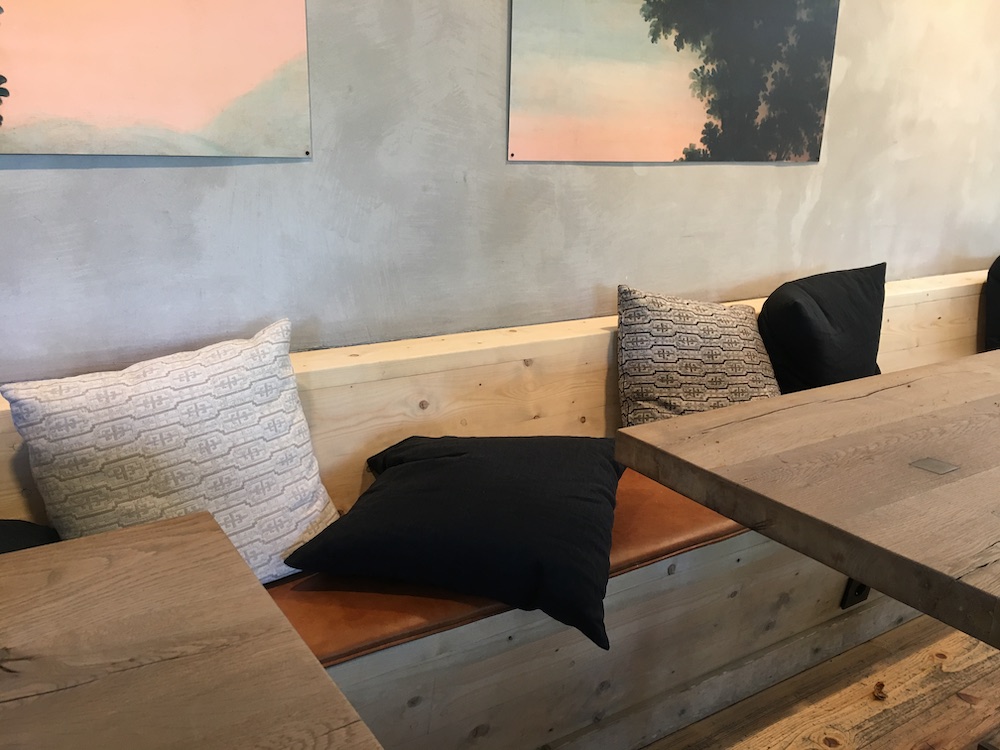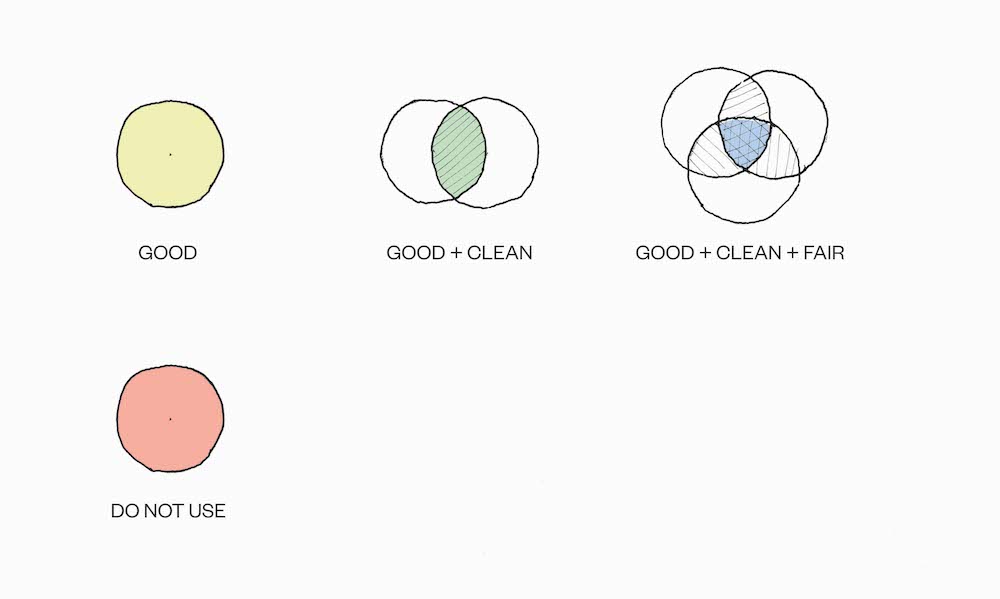
Slow Space: Clean Building Material Selection
In order to help us select materials that are good, clean, and fair we are developing a material vetting process to review new and existing products. There are hundreds of materials used in buildings and because we are small we cannot check every single one. However, we are doing our best as part of our ongoing research and development efforts and make significant strides forward every year.

Our first attempt at a Material Vetting Grading System. Drawings by Sarah Lueck.
We rely heavily on the tremendous work being done by others in the design and construction industry. For example, if information is available for materials that we are currently in the process of vetting, we will check them for harmful chemicals against a number of industry red lists. Some great examples of industry red lists are:
We may also look at some existing third party certifications, such as Cradle to Cradle and The Living Product Challenge/Declare to help us determine if a material is clean.
Cradle to Cradle evaluates the full life cycle of a product, from creation through installation for harmful chemicals or processes.
The Living Product Challenge is an environmental analysis that focuses on place, water, energy, health and happiness, materials, equity, and beauty.
Whenever possible we eliminate materials with a high negative impact on indoor air quality, carbon emissions, and environmental pollution. However, there are not always clean alternatives to many building products. For example, drywall contains silica, which appears on one or more of these red lists, however this may not be able to be eliminated from all projects due to cost issues.
We also use common sense and some age-old wisdom, giving preference to natural materials that are generally known to be non-toxic and unprocessed. Natural wood and stone have been used as building products for thousands of years and are inherently clean, as long as you do not add potentially harmful finishes, sealers or treatments. A simple approach is to use a limited palette of all natural materials.
Read the next article in our SLOW SPACE Series:
SLOW SPACE: WHY IS INDOOR AIR QUALITY IMPORTANT FOR CLEAN BUILDINGS?




